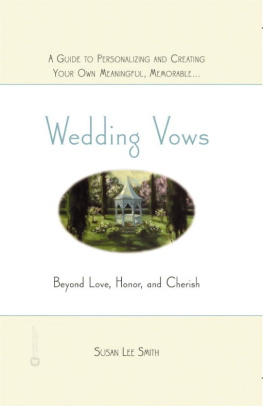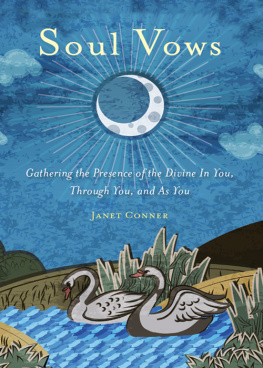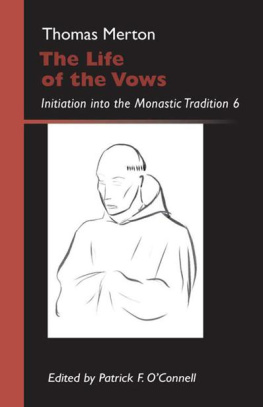 Wisdom Publications 199 Elm Street Somerville, MA 02144 USA wisdompubs.org Copyright 1992 by Robert Aitken First paperback edition published by Parallax Press in October 1992 (as The Dragon Who Never Sleeps) First Wisdom edition published 2018 All rights reserved. No part of this book may be reproduced in any form or by any means, electronic or mechanical, including photography, recording, or by any information storage and retrieval system or technologies now known or later developed, without permission in writing from the publisher. Library of Congress Cataloging-in-Publication Data Names: Aitken, Robert, 19172010, author. Title: Zen vows for daily life / Robert Aitken. Description: First Wisdom edition. | Originally published: Berkeley, Calif.: Parallax Press, 1992. | Includes index. | Identifiers: LCCN 2017018210 (print) | LCCN 2018001538 (ebook) | ISBN 9781614294016 (ebook) | ISBN 1614294011 (ebook) | ISBN 9781614293859 (hardcover: alk. paper) | ISBN 1614293856 (hardcover: alk. paper) Subjects: LCSH: Zen Buddhism Prayers and devotions. | Zen meditations. | Zen meditations.
Wisdom Publications 199 Elm Street Somerville, MA 02144 USA wisdompubs.org Copyright 1992 by Robert Aitken First paperback edition published by Parallax Press in October 1992 (as The Dragon Who Never Sleeps) First Wisdom edition published 2018 All rights reserved. No part of this book may be reproduced in any form or by any means, electronic or mechanical, including photography, recording, or by any information storage and retrieval system or technologies now known or later developed, without permission in writing from the publisher. Library of Congress Cataloging-in-Publication Data Names: Aitken, Robert, 19172010, author. Title: Zen vows for daily life / Robert Aitken. Description: First Wisdom edition. | Originally published: Berkeley, Calif.: Parallax Press, 1992. | Includes index. | Identifiers: LCCN 2017018210 (print) | LCCN 2018001538 (ebook) | ISBN 9781614294016 (ebook) | ISBN 1614294011 (ebook) | ISBN 9781614293859 (hardcover: alk. paper) | ISBN 1614293856 (hardcover: alk. paper) Subjects: LCSH: Zen Buddhism Prayers and devotions. | Zen meditations. | Zen meditations.
Classification: LCC BQ9289.5 (ebook) | LCC BQ9289.5 .A35 2018 (print) | DDC 294.3/443 dc23 LC record available at https://lccn.loc.gov/2017018210 ISBN 978-1-61429-385-9 ebook ISBN 978-1-61429-401-6 22 21 20 19 18 5 4 3 2 1 Cover design by Phil Pascuzzo. Interior design by Gopa & Ted2, Inc. To my parents and grandparents:
Gladys Baker and Robert Thomas Aitken,
Jessie Thomas and Robert Grant Aitken,
and
Florence Page and James Bartlett Baker
who bred ethics into my bones. My heart was full; I made no vows, but vows
Were then made for me. WORDSWORTH
The Prelude Foreword When I entered the monastery as a novice, the first book I studied was Gathas for Everyday Life, compiled by the Chinese Zen master Du Ti. Gathas are short verses we can recite during the day to help us dwell in mindfulness and look more deeply at what we are doing.
Today I still practice many of the gathas from that book when I wake up, when I put on my shoes, when I wash the dishes, when I enter the meditation hall. I have even compiled a handbook of forty-nine gathas to use for practicing in modern times. In 1985, I met Robert Aitken, roshi at his zendo in Hawaii, and I was pleased to discover that he is a poet who deeply appreciates practicing with gathas. In the Zen tradition, poetry and meditation always go together. In China, Japan, Korea, and Vietnam, everyone likes poetry, and we use poetry to make the practice of meditation enjoyable. Poetry is comprised of images and music, and images make the practice easy.
In this book, Aitken Roshi offers us many beautiful verses that we can use to reflect more deeply on what we are doing. What is going on is very important. Life in society is complex, and it is easy to lose ourselves in regrets about the past or anxieties about the future. The only moment we can be alive is this moment, and gathas, simple verses that state our intention to dwell in mindfulness, can bring us back to life. If we only dwell in the past or the future, we are like a ghost, and if our little boy or girl comes up to us and presents us with a beautiful smile, we will miss it. What a pity! Practicing mindfulness with gathas helps us develop concentration.
In Buddhism, meditation means looking deeply into the heart of reality, and concentration is the basic condition for this practice. In itself, concentration contains the seeds of the kind of insight that frees us from afflictions and reveals to us the nature of reality. I hope this book will inspire many readers to continue the Zen tradition of using verses to better enjoy daily life and cultivate concentration and insight. I hope you will use Aitken Roshis verses throughout the day and that one day you will begin to compose and practice with your own gathas as well. Dont try to use too many at once. Start with one or two or three or four, and memorize them.
Then, when the occasion for using your verse arises, you will be ready. We must keep the practice relevant and up-to-date, and Zen Vows for Daily Life is a sterling example of this. I am grateful to Aitken Roshi for offering us this beautiful book. Thich Nhat Hanh
Plum Village Introduction The poems in this book set forth occasions for religious practice. Though I made them for modern students, I was inspired by antique antecedents, back to the historical Buddha. My purpose in this essay is to present the ideas and forms of those antecedents.
The Buddhas original teaching is essentially a matter of four points the four noble truths: Anguish is everywhere. We desire permanent existence for ourselves and for our loved ones, and we desire to prove ourselves independent of others and superior to them. These desires conflict with the way things are: nothing abides, and everything and everyone depends upon everything and everyone else. This conflict causes our anguish, and we project this anguish on those we meet. Release from anguish comes with the personal acknowledgment and resolve: we are here together very briefly, so let us accept reality fully and take care of one another while we can. This acknowledgment and resolve are realized by following the eightfold path: right views, right thinking, right speech, right conduct, right livelihood, right effort, right recollection, and right meditation.
Here right means corrector accurate in keeping with the reality of impermanence and interdependence. The four noble truths are called noble because they present the vocation of wisdom and compassion. They are the foundation of all Buddhism, and form the heart of modern-day Theravada, the Buddhism of South and Southeast Asia. Mahayana, a later tradition that became the Buddhism of East Asia, produced quite radical changes in the way those basic ideas were interpreted and expressed. For example, early emphasis was upon demonstrating the insubstantial nature of the self, but in the Mahayana that insubstantial essence itself is given attention: It shines everywhere in the daily activities of everyone, appearing in everything. Though As to interdependence, the Mahayana Buddhist finds that relationships are not just the ordinary activity of giving and receiving support, but in every situation the other person, animal, plant, or thing is experienced as oneself.
This is interbeing, to use Thich Nhat Hanhs felicitous term, and is presented vividly in a multitude of expansive and profound metaphors in the Avatamsaka Sutra, translated into Chinese as the Hua-yen ching, the last great chronicle of the Mahayana. Central among these metaphors is The Net of Indra: a multidimensional net of all beings (including inanimate things), with each point, each knot, a jewel that perfectly reflects, and indeed contains, all other points. This cosmic yet intimate perspective is offered again and again throughout the sutra. Thomas Cleary, scholar of Hua-yen philosophy, writes: All things [are interdependent, and] therefore imply in their individual being the simultaneous being of all other things. This is philosophy at its grandest, and the Buddhist is left with the task of making it personal. Religions with Near Eastern antecedents permit a personal relationship with God, and while many of the metaphorical figures in the Hua-yen ching could be called deities, there is no single God ruling all.
The Buddhas followers cannot pray, Thy kingdom come, Thy will be done, but instead they have made such formal promises as, I will awaken my mind to the teachings of the Buddha for the benefit of all beings. Such vows are found in the very earliest Buddhist writings and continue to be of primary importance as a way of personalizing the practice in all forms of the religion today. In addition to vows, another way to personalize the Buddhas teaching has been to repeat gathas, four-line verses that sum up important points. Gathas too are found in the earliest Buddhist writings, and commonly have been memorized and used for right recollection guideposts on the Buddhas path.
Next page












 Wisdom Publications 199 Elm Street Somerville, MA 02144 USA wisdompubs.org Copyright 1992 by Robert Aitken First paperback edition published by Parallax Press in October 1992 (as The Dragon Who Never Sleeps) First Wisdom edition published 2018 All rights reserved. No part of this book may be reproduced in any form or by any means, electronic or mechanical, including photography, recording, or by any information storage and retrieval system or technologies now known or later developed, without permission in writing from the publisher. Library of Congress Cataloging-in-Publication Data Names: Aitken, Robert, 19172010, author. Title: Zen vows for daily life / Robert Aitken. Description: First Wisdom edition. | Originally published: Berkeley, Calif.: Parallax Press, 1992. | Includes index. | Identifiers: LCCN 2017018210 (print) | LCCN 2018001538 (ebook) | ISBN 9781614294016 (ebook) | ISBN 1614294011 (ebook) | ISBN 9781614293859 (hardcover: alk. paper) | ISBN 1614293856 (hardcover: alk. paper) Subjects: LCSH: Zen Buddhism Prayers and devotions. | Zen meditations. | Zen meditations.
Wisdom Publications 199 Elm Street Somerville, MA 02144 USA wisdompubs.org Copyright 1992 by Robert Aitken First paperback edition published by Parallax Press in October 1992 (as The Dragon Who Never Sleeps) First Wisdom edition published 2018 All rights reserved. No part of this book may be reproduced in any form or by any means, electronic or mechanical, including photography, recording, or by any information storage and retrieval system or technologies now known or later developed, without permission in writing from the publisher. Library of Congress Cataloging-in-Publication Data Names: Aitken, Robert, 19172010, author. Title: Zen vows for daily life / Robert Aitken. Description: First Wisdom edition. | Originally published: Berkeley, Calif.: Parallax Press, 1992. | Includes index. | Identifiers: LCCN 2017018210 (print) | LCCN 2018001538 (ebook) | ISBN 9781614294016 (ebook) | ISBN 1614294011 (ebook) | ISBN 9781614293859 (hardcover: alk. paper) | ISBN 1614293856 (hardcover: alk. paper) Subjects: LCSH: Zen Buddhism Prayers and devotions. | Zen meditations. | Zen meditations.